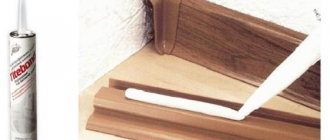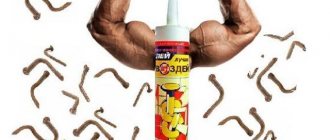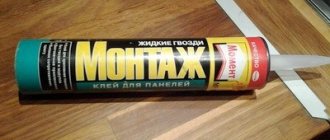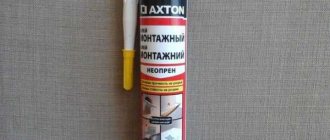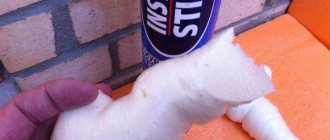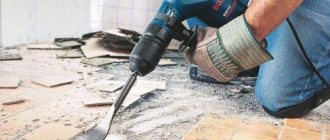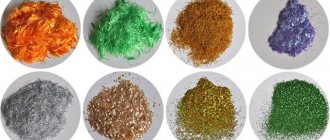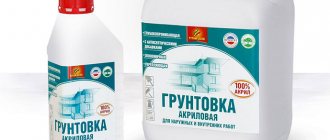Prevents contact with water and extends service life
The basic rule when cleaning laminate flooring is: the less water, the better.
Too much moisture can cause the floor to curl. To keep your laminate looking like new for a long time, follow these care tips:
- try not to use steam cleaning;
- do not walk on laminate floors in stiletto heels - this may cause noticeable dents;
- Do not sand, wax or varnish laminate floors;
- If water spills on the coating, wipe it off immediately;
- Once the floors are clean, wipe them with a dry cloth.
Expert opinion Natalya Osadchaya
To prevent heavy furniture, sharp legs of chairs and tables from damaging the surface, cover them with felt coverings.
A good alternative is also various small rugs that protect the floor from damage and, in addition, enliven the room
Also pay attention to office chairs with wheels. Buy special soft casters for hard floors
How to remove dried liquid nails
Any painstaking renovation is always followed by a thorough cleaning of the room. All surfaces must be wiped and cleaned of unwanted stains, streaks and droplets of glue or paint. If they are left carelessly lying on new and newly coated finishing materials, they will undoubtedly spoil the entire appearance. Therefore, armed with rags, sponges and cleaning products, general cleaning begins, aimed at getting rid of all the nasty traces remaining after the repair.
It is recommended to wipe off traces of liquid nails immediately after application.
One of the heaviest and most unpleasant stains are traces left after repair from liquid nails, which are quite difficult to deal with, so when working with this material it is advised to remove it immediately with dry cloths. But it is not always possible to notice a fallen drop immediately, and in a short time it turns into a stain that is difficult to remove, which you will then have to struggle with for a long time and persistently in order to remove it.
In this article, detailed instructions will help you quickly and easily deal with old marks from liquid nails, without spoiling the surface on which it is located.
What kind of liquid nails are there?
Liquid nails today are one of the most popular and durable adhesive materials with which you can perform any work without the use of fasteners. They can be used to secure platbands, glue different surfaces together, and much more. They grip so tightly that they can easily replace even the most reliable fasteners, which is why they are often used in renovations.
There are two types of liquid nails: the first are water-based, and the second are solvent-based.
Video about liquid nails
Those nails that are created on the basis of water are considered environmentally friendly, do not have a strong odor and are not dangerous to humans, but they will glue longer and with less quality. Solvent-based liquid nails have a sharp and unpleasant odor, but their properties are much better; in a matter of seconds they can glue any surface together and create a strong and reliable base.
Before you use liquid nails, read the instructions on the back label. After reading it, you can learn how to remove the glue immediately after using it, so as not to create a lot of unpleasant moments for yourself later after the repair.
Liquid nail removal tools
In order for the work of removing marks from liquid nails to be successful and accurate, you should prepare in advance all the necessary tools that will be needed for this process.
Read the instructions on the label for tips on how to remove liquid nails
You will need:
- Scraper.
- Wire or fishing line, you need to cut them half a meter larger than the expected area of contamination.
- Gloves will help protect your hands from wire cuts and the harmful effects of cleaning products.
- Water or solvent only based on harmless and mineral substances.
- Special cleaners that are sold in hardware or construction stores. Such products are good at helping to cope with the consequences after using strong adhesives. Remember that strong substances are used for cleaning that can damage the new surface, so you should carefully remove dried stains.
Instructions for cleaning liquid nails
If you undertake to clean stains from liquid nails, know that this is a rather painstaking and difficult task, which you will have to tinker with and make every effort to achieve the best result.
Liquid nail marks will help remove ice
So, let's look at the detailed instructions for removing frozen liquid nails from the surface:
- Use a wire or fishing line to pry up the dried trace of adhesive on one side only, pierce it and carefully, slowly move it to the middle of the fishing line.
- Then take both ends of the wire and move it back and forth. This will allow the dried glue to start to come off, as soon as it can be lifted a few millimeters, slide some paper or a screwdriver under it to prevent it from sticking back again.
- Do not stop moving the wire until all the dried stain has moved away from the surface.
- If small drops of glue remain around the stain, they can be removed with a scraper and then wiped with water or, if necessary, a small amount of solvent. But be especially careful not to damage the new surface with such a strong and dangerous cleaning substance.
There is another method that helps get rid of traces of liquid nails.
Cleanse with heat or cold
You can try to melt frozen liquid nails by directing a stream of heated air from a hair dryer nozzle onto the stain. After softening, it will be easily absorbed by the fabric; in extreme cases, you will have to wipe the surface several times, replacing the flap with a clean one.
Another option to achieve a successful result is cooling. The method is similar to the method for removing chewing gum from fabrics.
Apply a piece of ice to the liquid nail stain, wait for the adhesive trace to completely harden, and then remove it entirely or in the form of crumbs. Cooling is especially easy if the glued object is small in size and can be taken outside in the cold. Traces of the composite will quickly become covered with cracks from hypothermia and can be easily mechanically cleaned off; wiping them off will not be difficult.
How to remove liquid nails
To begin with, you can try to remove unsightly glue stains by mechanical action. If you have a sharp knife, scraper, or spatula, use them to carefully cut and scrape off the drip, trying not to damage the base. You can remove stains in layers if they are of significant thickness, picking them up from the edge and tearing them off the material.
You can remove glue from linoleum, laminate, and PVC panels using wire. You need to act this way:
- pick up a stiff wire;
- try to pierce the accumulation of frozen glue with it closer to the surface of the base material;
- pull the wire forward so that you can grab it at both ends;
- move the wire with your hands in any direction, causing the liquid nails to crumble and detach until they are completely separated from the base.
Removing stains from skin and clothes
The skin of the hands usually becomes contaminated when working with liquid nails carelessly or ignoring the use of gloves. Acrylic-based nails wash off well with soap and water. Additionally, you can use body scrubs that have hard particles and easily scrub off all impurities. If you cannot remove the neoprene compound from the skin, you need to thoroughly rub vegetable oil, baby or other fatty cream, Vaseline into the dirty area, then scrub it with a scrub.
It is difficult to remove stains of such high-strength glue from clothing and fabric. Acrylic compounds can be dissolved with acetone, white spirit, and then thoroughly wash the item with regular powder. Traces of neoprene glue on textiles are literally eaten away, and the use of chemical removers can irreversibly damage the item. If you are unable to remove fresh glue stains from furniture or textiles, you should try acetone or fatty oils on an inconspicuous area, or carefully scrape off the stain piece by piece mechanically.
Cleaning plastic
It's easier to clean dirty stains from plastic than from fabric.
However, some types of plastic products do not react well to solvents and removers, so they must be used with caution. You can also wipe off glue stains from plastic with Vaseline, oil, turpentine, and then wash with detergent
You can replace the solvent with acetone-based nail polish remover, which is rubbed into the contaminated area until the liquid nails soften. Dimexide, a pharmaceutical product that dissolves glue in a matter of minutes, is also suitable for removing stains.
To reduce the risk of damage to a plastic surface with liquid nails, you need to use the following tips:
- Before work, it is good to cover things with cellophane and newspapers;
- If a drop of glue gets on the product, immediately wipe it off with a dry cloth and then wash it with soap;
- never wait for the glue to dry, but remove it fresh, without spreading the stain onto surrounding areas.
Traditional methods for removing liquid nails
If you don’t have the time or money to buy a special remover, you can try unconventional methods for removing adhesive stains from hard substrates:
Moisten a cotton swab with butter or margarine and treat the stain well. Then wash the surface with soap. Sprinkle the trace of liquid nails with table vinegar (6-9%), give the product time to work (usually 15-30 minutes), then scrub off the stain softened by the acid. Dampen a kitchen sponge, squeeze well, sprinkle generously with baking soda. Rub the glue stain with this powder until it disappears completely. Place a cloth moistened with water on the stain and leave for an hour. Then remove liquid nails with pumice foot pad
You must act carefully so as not to damage the surface of the product.
Cleansing with heat and cold
To get rid of frozen liquid nails, you can use physical methods - heating and cooling. Heating with a hairdryer softens the stain well, and it can be removed with an ordinary cloth. To heat the contaminated area, you need to cover it with a cloth, then expose it to hot air as long as it takes to melt the glue. Some of it will be absorbed into the flap, the rest will need to be quickly wiped off.
Glue "Titan"
If the glue layer is thick, then lay the fabric on a hard surface, cover it with a cloth and tap the stain with a hard object. If the fabric is natural, then remove the remains using one of these methods.
Acetone (nail polish remover) or white spirit - for large or old stains. Put on gloves, dampen a cotton pad or a piece of white cloth, blot the stain and leave for 30 minutes, then scrub with a stiff brush and wash the item as usual. Only for natural fabrics.
Dimexide - sold in pharmacies. Dampen a cotton pad or piece of white cloth, blot the stain and leave for 30 minutes, then wash the item as usual.
Traditional methods
Chemical solvents should not be used on metal substrates as they may cause marbling marks. Mechanical removal of liquid nails is acceptable for silicate and organic glass. The method is suitable for cleaning laminate and glossy tiles
You need to work carefully. Treat each stain separately
- Pharmaceutical drug Dimexide. Dissolves adhesives within a few minutes.
- A small amount of margarine or butter (any home remedy with a high fat content).
- Vinegar (6-9%). The contaminated surface is wetted for 15-30 minutes. This option is only valid for hard surfaces. After half an hour, the glue itself should become softer and easier to carefully remove with a spatula.
- Soda. A kitchen sponge is moistened with warm water, then sprinkled generously with soda, and the surface is wiped until the glue completely disappears. Frozen areas can be moistened with soda and water, leaving for 20-25 minutes. Soda can be replaced with any kitchen cleaner.
- Pumice stone for feet. First, put a wet rag on the glue mark, and after a while try to wipe it off.
If a stain was noticed during work, it is removed immediately. When using solvents, first check its effect on a small, inconspicuous area of the surface.
Removal from clothes and hands
You can easily wipe off liquid nails with a dry, clean cloth only before the adhesive mixture dries. In other cases, additional tools and maximum care are required so as not to damage the surface being treated or leave stains.
- Metal scraper, chisel, spatula. After wiping off, traces of liquid nails must be treated with a solvent.
- Fishing line or wire (their length should be 50 cm greater than the diameter of the remaining spots). With one end of the wire you need to touch the edge of the dried stain, and then carefully pierce it towards the center. When a particle of glue leaves the surface, you can use a spatula.
- A sharp knife (can be a construction knife or a stationery knife).
- Solvent based on harmless mineral components. Kerosene, acetone, white spirit and solvent 646, 647 or 650 can be used.
- Warm water. This method is only for solvent-free adhesives.
- Construction hairdryer. The heated composition of liquid nails softens slightly and should be amenable to removal with a spatula or wire.
- Remover for construction and household stains.
Gloves and goggles are required for this work.
They can protect your eyes and skin from solvents and wire cuts.
Means that can be used to wash off or clean the remains of assembly adhesive are always indicated on the packaging. Be sure to wear thick rubber gloves in advance.
Fresh glue is removed with a piece of old fabric, such as corduroy, denim or cotton. If you fail to wipe with a dry cloth, you need to moisten it in solvent and try again.
From the skin of hands, clothes
You can wash liquid nails from your hands while they are fresh with warm water and laundry soap. A dried stain can be removed with nail polish remover (a cotton pad soaked in it). After this, it is recommended to moisturize the skin of your hands with cream.
Do not pour nail polish remover onto your skin as it may cause irritation.
You can try replacing the solvent itself with a regular body scrub. You can clean clothes with acetone or white spirit (if you used acrylic liquid nails). Things need to be washed later. Neoprene glue hardens very firmly, and the use of store-bought removers can completely ruin the fabric.
If there is no way out, it is better to first check the result on an invisible small piece of such material.
With leather furniture
You can wash off fresh glue residues with baby cream, Vaseline, and vegetable oil. After processing, all that remains is to remove traces of fat. You must work with neoprene adhesive very carefully, since it is almost impossible to remove, and cleaning compounds destroy fabrics and upholstery surfaces.
For wooden parts and furniture facades, wipe with a cloth soaked in hot water. This option is also suitable for painted floors. The use of removers is not allowed, since the chemical composition can damage the coating.
Cleaning linoleum
The surface of linoleum does not withstand the effects of aggressive chemical compounds. You can remove marks by prying one of the edges with a spatula or a sharp knife, and then using a thin fishing line to separate the glue from the surface. You need to move the line “back and forth” without stopping. When the drop is removed, the remaining marks should be wiped with a clean damp cloth. It is better if you pre-treat it with laundry soap.
Cleaning plastic
You can remove the adhesive from plastic using any oil (fatty substances) or solvents. When removing with tools, it is important not to leave scratches. In order not to spoil the surface, you can try the folk method using vegetable oil or Vaseline.
The only way to remove stains from a stretch ceiling is with aggressive chemical compounds from a hardware store. The product must be used strictly according to the instructions on the package. The dampened rag must be applied until the dried glue breaks down and comes off. You can't rub anything.
You cannot use a spatula or fishing line for wallpaper, as it will leave a mark.
You can restore the cleanliness of papered walls only with cotton pads soaked in solvent. The cured glue should be absorbed. Each time you need to apply a clean cotton pad with solvent. If you cannot remove the stain, then it is better to carefully cut off the stained area and cover it with a clean piece of the same wallpaper.
For such surfaces, it is permissible to use solvents 646 or 647. The tiles are not afraid of the effects of chemicals, which means that it is easiest to remove adhesive residues from the tiles. Aged adhesives may require additional wiping. The second time you need to take a clean rag.
The composition of liquid nails practically does not tolerate sudden changes in temperature and begins to crumble. The method of exposure to hot and cold air is most effective when working with metal surfaces.
A hair dryer is used for heating.
Ice is suitable to cool the surface. When exposed to cold, the composition crumbles into pieces and should be removable. You can then wipe off the marks with a damp old rag. For old stains, the procedure will have to be repeated, but the second time you need to wipe it with a clean rag.
You can try using only ice. The glue should harden and crack. All that remains is to gently wipe with a damp cloth or cotton pad soaked in solvent.
We suggest you familiarize yourself with How to remove old grout from tile joints: how to quickly remove grout, what you can use to remove it, details of removal
Traditional methods
Chemical solvents should not be used on metal substrates as they may cause marbling marks. Mechanical removal of liquid nails is acceptable for silicate and organic glass. The method is suitable for cleaning laminate and glossy tiles. You need to work carefully. Treat each stain separately.
- Pharmaceutical drug Dimexide. Dissolves adhesives within a few minutes.
- A small amount of margarine or butter (any home remedy with a high fat content).
- Vinegar (6-9%). The contaminated surface is wetted for 15-30 minutes. This option is only valid for hard surfaces. After half an hour, the glue itself should become softer and easier to carefully remove with a spatula.
- Soda. A kitchen sponge is moistened with warm water, then sprinkled generously with soda, and the surface is wiped until the glue completely disappears. Frozen areas can be moistened with soda and water, leaving for 20-25 minutes. Soda can be replaced with any kitchen cleaner.
- Pumice stone for feet. First, put a wet rag on the glue mark, and after a while try to wipe it off.
If a stain was noticed during work, it is removed immediately. When using solvents, first check its effect on a small, inconspicuous area of the surface.
The joy of firmly gluing parts is soon joined by thinking about how to wipe off liquid nails in places where they unexpectedly appeared on the surface.
It is good if the concern appears immediately after the work is completed, which increases the chances of a complete cleanup. Otherwise, it will take a long time and carefully to remove the remaining glue that has appeared around the edges.
Types of liquid nails
There are several types of adhesives that provide strong fixation, a common feature of which is the presence of inorganic fillers.
To dissolve a multicomponent mass containing, in addition to mineral compounds, polymeric substances, manufacturers use water or organic liquids. If necessary, after finishing work, you can immediately wipe off the remaining adhesive mass with the same solvents.
The nature of the polymers also differs as follows:
- aqueous composites contain chains of PVA, polyacrylics or urethanes;
- organic adhesives have a rubber-like component.
Depending on the chemical composition, the area of application, recommendations for application and removal of residues differ. It is difficult to wipe off the polymerized mass, even if you start cleaning off the remaining liquid nails immediately after gluing.
You won’t be able to cope with the task with your bare hands, so you should collect in advance the necessary tools and aids that will allow you to deal with the problem quickly and effectively.
To clean up liquid nail residues you will need the following kit:
- scraps of old fabrics;
- metal scraper;
- thin metal wire or regular fishing line;
- water;
- solvent (acetone, solvents 646 or 647);
- protective hand gloves;
- hairdryer
For the success of the event, you should have instructions nearby to recall the composition of the product in your memory and choose the correct procedure for cleaning.
You can try to melt frozen liquid nails by directing a stream of heated air from a hair dryer nozzle onto the stain. After softening, it will be easily absorbed by the fabric; in extreme cases, you will have to wipe the surface several times, replacing the flap with a clean one.
Another option to achieve a successful result is cooling. The method is similar to the method for removing chewing gum from fabrics.
Apply a piece of ice to the liquid nail stain, wait for the adhesive trace to completely harden, and then remove it entirely or in the form of crumbs. Cooling is especially easy if the glued object is small in size and can be taken outside in the cold. Traces of the composite will quickly become covered with cracks from hypothermia and can be easily mechanically cleaned off; wiping them off will not be difficult.
Special cases
If glue residues are visible on the ceiling, you need to act extremely carefully, because any error will be noticeable and it is almost impossible to hide it. It doesn’t matter - the blot is visible next to the decorative design of the corners or in the middle of the ceiling; you can wipe it off only with special means, acting in accordance with the instructions, without improvising.
You need to work very carefully with wallpaper, on the surface of which defects are also very noticeable. You should choose a solvent suitable for this material, saturate the flap with it and apply it to the stain from liquid nails, without rubbing, until all the dirt is absorbed by the fabric. The textile in this case should work like a blotting paper for ink. Considering that liquid nails are not colored, there should be no trace left after the stain is absorbed by the fabric.
You can remove stains from liquid nails on leather furniture using a cotton swab with Vaseline or a rag soaked in vegetable oil. The process will take a lot of time, but the result will justify the efforts; the leather covering can be completely wiped off to its original appearance.
When cleaning silicate or organic glass, you need to use a minimum amount of mechanical force, however, the same as when removing stains from laminate or tiles with a glossy surface. Materials that create a beautiful decorative effect, such as tiles, are easily damaged; any scratches on them are visible to the naked eye; they can be rubbed off without consequences only without great physical effort.
Tips for work
When working with glue, you need to follow some rules so as not to get rid of stains later. Before starting work, you must read the instructions.
- When choosing liquid nails, look at their contents. If the work will be carried out outdoors or in a room with high humidity, you need to choose solvent-based glue. For work in dry rooms, nails based on water or acrylic are suitable;
- use glue to join metal, wood, concrete, plastic, glass materials; their list is always indicated in the instructions;
- You should work in a well-ventilated room with open windows. When working outdoors, maintain a temperature regime of at least +4 C. Parts for connection must be prepared in advance - clean them of old dirt and dust;
- remove rust from metal with brushes; degrease wooden parts with solvent; treat concrete or stone parts with a primer and let them dry;
- Apply the adhesive composition to both surfaces, depending on the weight of the materials, use different methods of applying glue: dotted, linear, continuous; Press the parts to be glued and leave to dry for at least 12 hours.
Using the advice of experienced craftsmen, you can do the work yourself at home.
At the final stage of repair, when most of the work is completed, there are often dried spots of glue. They can “settle” on clothing, various surfaces, and even on the skin of the hands. Liquid nails, polymer adhesives used for reliable and long-term fastening of materials, are especially corrosive.
It is not easy to clean such stains: they cannot be washed off with ordinary soap and water. You will have to look for a solvent for liquid nails or use effective improvised means.
How to wipe off liquid nails: how to remove liquid nails yourself
Liquid nails are the common name for a common type of adhesive building materials. They are used for mounting and connecting a wide variety of objects and structures without traditional auxiliary elements (self-tapping screws, screws, staples, etc.). For example, liquid nails are convenient for attaching a baseboard to a wall or a trim to a door.
They are also used for gluing tiles or plastic. This is ideal when you need to secure fragile materials that might splinter or crack when driving a metal nail.
Thanks to this invention, the repair and construction process is significantly accelerated and simplified. There is no need to hammer or drill anything or make noise, disturbing your neighbors and family. And the connection is no less reliable than when using steel fasteners.
Types of liquid nails
Liquid nails are classified depending on the raw materials from which they are made:
- Solvent-based - these compounds almost instantly and permanently connect any materials and surfaces. But at the same time they are harmful to humans, have a specific, pungent odor, corrode the skin and mucous membranes;
- Water-based - almost odorless, non-toxic, environmentally friendly. But at the same time they are less reliable, it takes more time for the reaction to occur and the surfaces to be firmly connected. Suitable for delicate materials, but not suitable if heavy, large structures are installed.
Liquid nails are really convenient and effective to use. But it can be very difficult to wipe off dried traces of material.
Therefore, before starting work, it is always recommended to read the instructions, paying special attention to the section on how to completely remove liquid nails if necessary.
Liquid nail removal tools
To quickly and with a minimum of effort clean the surface of liquid nails, without damaging it or ruining its appearance, prepare the following tools and devices in advance:
- Metal scraper.
- Thin wire or fishing line - you need a piece that will be at least 50 cm longer than the area that needs to be processed.
- Thick gloves to protect against cuts and chemicals.
- Water or a solvent that does not contain acetone.
- Strong solvents that can be purchased at hardware stores. With their help, it is possible to clean even the oldest traces of the strongest glue quickly and accurately. But remember that the lower surface may suffer and change its appearance and texture under the influence of aggressive chemicals.
How to remove liquid nails - step-by-step instructions
Before you get started, take some time and patience. Remember that you will have to not only remove the frozen adhesive substance, but also wash the surface from its residues and traces.
Put on gloves, take the wire and carefully pierce one end of the hardened liquid nail. Move the wire so that the nail is in the middle
Grasp the opposite ends of the wire. Now begin to carefully move the wire back and forth, trying to lift the nail. Once this happens, quickly place a piece of paper or cardboard underneath it to prevent it from returning to its original position. Continue using wire or fishing line to move the liquid nail mark until it is completely separated from the surface.
However, that's not all. There are probably traces of adhesive on the surface that I would also like to remove. To do this, you can try wiping the stain with water first. If this does not help, use a stronger solvent. But first test it on a small area of the surface.
How to remove liquid nails - folk remedies
It is not always possible to run to a construction supermarket and buy a universal solvent. Or there are people with allergies in the house, and therefore it is undesirable to use toxic chemicals. Then folk remedies and tips for removing liquid nails will help.
- Warmth and ice. Liquid nails do not like temperature changes. Therefore, you can heat the mark several times with a hairdryer and then wipe it with an ice cube - it will come off the surface more easily.
- Vegetable oil and Vaseline. In this way, you can clean the leather surface from liquid nails. Soak a cloth or cotton wool in oil or grease and treat the mark well. Then moisten with warm water and carefully remove.
To avoid the hassle of removing liquid nails or adhesive residue, it is ideal to avoid any unwanted contact with surfaces. If a drop does end up on the floor or furniture, it is easier and faster to immediately wipe it off with a dry cloth than to waste time with wire and solvent later.
https://youtube.com/watch?v=Ku0uP58PVyQ
How to remove liquid nails from skin and clothes
Careless use of glue or working without gloves leads to contamination of hands, sometimes stains remain on things and furniture upholstery.
To solve the problem you need to:
1. You can wash off the acrylic composition from your hands with soap and water.
2. Scrub stains on leather furniture with baby cream.
3. Sunflower oil and Vaseline are suitable for cleaning the skin.
4. Liquid nails are wiped off from clothes using acetone.
5. After treatment, things must be washed and furniture wiped down.
If traces of neoprene glue remain on the textile, they are almost impossible to remove. The use of washes destroys the fabric, and the clothes lose their original appearance. It is recommended to cover delicate surfaces before carrying out repairs. Fresh glue should be removed immediately, and when using removers for liquid nails, test the product on an inconspicuous area of the surface.
Source (full version): https://gidpokraske.ru/rabota-s-kleem/chem-otteret-zhidkie-gvozdi.html
The procedure for removing liquid nails from non-moisture-resistant and moisture-resistant wallpaper with foam texture
Things are somewhat more complicated with ordinary wallpaper, which cannot withstand exposure to moisture. Also, the previous method is not suitable for cleaning wallpaper made of foam vinyl - this material deteriorates under mechanical stress.
In this situation, the following feature of liquid nails will help: at temperatures from +50 0 C and above, rubber glue begins to “float”. Therefore, you can remove it as follows:
- Take a construction or regular household hair dryer and direct a stream of hot air at the dirt.
- When drops of glue begin to soften, carefully remove them with a clean rubber spatula.
After removing the main contamination, while the wallpaper is still warm, the remains are cleaned with a dry, clean cloth.
- You need to understand that it is not always possible to remove traces of liquid nails from wallpaper. If the contamination is too heavy, stains may remain. Therefore, it is important to be careful when working with rubber adhesive.
Please rate the article ☺
Click on the star ↓
Average rating: 0 / 5. Number of votes: 0
Be the first to vote!
Features of epoxy resin
Thermoset plastic has special strength due to its complex structure. The material is in demand in almost all areas of industry.
The synthetic oligomer contains the following substances:
- alabaster, cement, chalk - compact the structure of the mass;
- fine-grained powder – adds airiness;
- cotton, glass fiber - adds viscosity to the substance;
- wood chips – reduces specific gravity;
- pyrogenic silicon dioxide – increases the density of the mass;
- graphite – gives black color.
By combining different resins and hardeners, it is possible to create building materials with increased rigidity and strength. In this case, the substances may have a rubber or hard structure.
What you will need
Attention! To remove traces of glue, you need to use improvised means and solvents. Fresh stains can be easily wiped off with foam sponges soaked in warm water.
To wipe off glue stains, improvised materials are used, which depends on the place where the adhesive composition got in. But a person engaged in construction or repairs should always have on hand old fabrics, water, various scrapers, and tools to help remove dirt. You will have to remove old stains with cleaners.
Scraps from old fabrics
To quickly clean a dirty surface without harming its appearance, you need to prepare in advance unnecessary fabrics of different quality - cotton, corduroy, denim. You should also have a container of water nearby to wet the fabrics. It is recommended to wear gloves when using any adhesive composition.
Scraper, chisel or spatula
Use hard tools to mechanically remove old dirt, then wipe the stained area with a rag soaked in solvent. These tools are auxiliary when cleaning glue with wire and solvents; they help to carefully remove the remaining adhesive from the stained surface.
Thin metal wire or fishing line
A thin wire or thick fishing line will need a piece half a meter longer than the contaminated area. Use the end of the wire to pry up a dried piece of glue, carefully pierce it and move it to the middle of the segment. Then you need to hold the wire by the ends and move it back and forth until a particle of glue begins to move away from the surface. Then you need to lift it a little to slide the spatula under it.
If small drops still remain at the spot, remove them with a scraper and then wipe with a damp cloth soaked in solvent. When using a solvent to remove residual stains, you must act carefully so as not to spoil the fresh surface.
Warm water
The multicomponent mass of the adhesive composition is dissolved with warm water and acrylic solutions. Immediately upon completion of work, moisten a rag with them and wipe off glue stains
It is important that acrylic compounds do not contain acetone; this can be easily recognized by their smell. With aqueous composites, the adhesive is removed thanks to a complex chain of PVA with polyacrylics
Fresh traces of glue from plastic windows and window sills are wiped off only with warm water, without the use of acrylic compounds that destroy the structure of the plastic.
Mineral-based solvent or special remover
Aggressive solvents are suitable for cleaning old stains. It should be remembered that the lower surface suffers from the solvent and its texture changes.
Protective gloves and glasses
Manufacturers recommend working with safety glasses and protecting your hands with gloves. Adhesive materials and means for removing contamination from them, if they come into contact with the skin of the hands, cause local burns, and contact with the eyes is not allowed at all - this can seriously damage vision. In addition, you can get a general allergic reaction.
Construction hair dryer
Note! If glue stains have time to polymerize, it will be difficult to wipe them off. Rough tools leave scratches on any surface
Then a hair dryer comes to the rescue.
The old stain is first heated with a hairdryer, after which it easily dissolves in cleaning products. If the hairdryer also operates in the cooling mode, soft drops of glue can be cooled so that they harden and removed with a wire, a rag and warm water.
Required tools and materials
- Metal scraper, chisel, spatula. After wiping off, traces of liquid nails must be treated with a solvent.
- Fishing line or wire (their length should be 50 cm greater than the diameter of the remaining spots). With one end of the wire you need to touch the edge of the dried stain, and then carefully pierce it towards the center. When a particle of glue leaves the surface, you can use a spatula.
- A sharp knife (can be a construction knife or a stationery knife).
- Solvent based on harmless mineral components. Kerosene, acetone, white spirit and solvent 646, 647 or 650 can be used.
- Warm water. This method is only for solvent-free adhesives.
- Construction hairdryer. The heated composition of liquid nails softens slightly and should be amenable to removal with a spatula or wire.
- Remover for construction and household stains.
Gloves and goggles are required for this work. They can protect your eyes and skin from solvents and wire cuts.
How to wash your hands from fuel oil
Modern people are surrounded by a wide variety of mechanical devices. Therefore, no one is immune from contamination by greasy lubricants. Men are especially often concerned about the issue of removing fuel oil from their skin, because they are most often associated with the maintenance of equipment. But women and children can also get dirty with fuel oil. To get rid of it, you will need special or improvised means. It can be:
- specialized cleaning products for washing heavily soiled hands
- dishwashing detergents;
- chemicals for dry hand cleaning;
- White Spirit;
- washing powder;
- butter;
- margarine;
- eucalyptus oil;
- laundry soap;
- ammonia;
- petrol;
- car shampoo;
- soda;
- coffee grounds;
- berries;
- clay.
Depending on possibilities or personal convictions, it is permissible to use both chemical and traditional methods to remove fuel oil. The choice determines the intensity of contamination and the characteristics of the victim’s body.
Chemical methods
Chemicals are most often used to remove fuel oil. The drugs are reliable and effective. Contamination is quickly removed with effective chemical reagents. There are several options for using household chemicals.
According to the first method, to remove fuel oil, use washing powder or dishwashing detergent:
A little substance is applied to the skin and the dirt is gently rubbed. Residues are washed off with warm water.
After using the drug, it is recommended to lubricate cleansed skin with a nourishing cream to protect the dermis from drying out and irritation.
Using the following method, you can use special preparations to clean heavily soiled hands. You can buy a lot of cleaning products in stores to remove complex stains. Buying such a drug is within the capabilities of anyone.
The most popular were weakly acidic cleaners. They contain a high content of abrasives. An example of such products is the paste-like suspension SOLOPOL:
- Apply the substance to dry hands.
- In the contaminated area, the suspension is thoroughly ground.
- Add a little water and grind again.
- Residues and dirt are washed off with warm water.
- Hands are dried and lubricated with a nourishing, better regenerating, cream.
To clean your car from fuel oil contaminants, service stations sell special shampoos. Simply wash your hands with it to get rid of traces of dirt. The most effective products are Doctor Wax, Karcher, Sonax.
White spirit and other solvents are aggressive substances. But you can get into the top ten. In addition to white spirit, it is permissible to use gasoline, diesel fuel, and even motor oil. All substances act directly on the structure of the dirt.
The most delicate of all such products is motor oil. It cleans almost any dirt and is used without water. The composition has a disinfecting effect, which is especially good for damaged skin.
Folk remedies
Folk remedies will help if specialized ones are not at hand. There is a time-tested solution. It is prepared from ammonia, soda, starch and turpentine:
- In a small container, mix a couple of large spoons of baking soda and starch.
- Add to them a small spoonful of turpentine and ammonia.
- The components are mixed until smooth.
- The paste mixture is applied to your hands and left to dry completely.
- Wash off the substance and dirt with warm water and laundry soap.
Oils and clay are used in the same way as in the case of foam removal. Clay or coffee grounds will help remove fuel oil.
A natural abrasive is applied to the skin, rubbed gently but thoroughly and the dirt is washed off under heated water.
In rural areas, berries, especially elderberries, will be a salvation. They rub their hands with them, as if soaping them. Green gooseberries and red currants are suitable. Clean the leaves of rhubarb and sorrel.
A transparent film of laundry soap is no less effective. Lather your hands and wait for the product to dry completely. This must be done before work. Cleaning your skin will be much easier.
How to remove liquid nails from skin and clothes
You will need acetone, soap, Vaseline or baby cream, wipes and solvent. What solvent or remover is needed is read on the packaging.
How to wash glue off your hands
If the liquid nails are neopropene, then you will have to put in a lot of patience and effort. Clothes are unlikely to get their original appearance. To remove the acrylic composition, simply wash and scrub your skin or clothing with warm, soapy water. Cream is needed to lubricate the skin. This kills two birds with one stone - the stain softens and comes off easier, and the skin is less exposed to mechanical and chemical influences. Instead of cream, they also use sunflower oil.
It must be clearly understood that any solvent or remover is a highly aggressive substance. When working with them, safety precautions are observed. Gloves are required.
Cleansing with heat and cold
The composition of liquid nails practically does not tolerate sudden changes in temperature and begins to crumble. The method of exposure to hot and cold air is most effective when working with metal surfaces.
Ice is suitable to cool the surface. When exposed to cold, the composition crumbles into pieces and should be removable. You can then wipe off the marks with a damp old rag. For old stains, the procedure will have to be repeated, but the second time you need to wipe it with a clean rag.
You can try using only ice. The glue should harden and crack. All that remains is to gently wipe with a damp cloth or cotton pad soaked in solvent.
Cleaning tiles and glass
There are different ways to remove resin from tile and glass surfaces. If the stains are fresh, they are removed by wiping with a damp sponge and soapy water. The hardened substance is removed by heating and cooling.
Heating
Contaminated areas are heated with a hair dryer until the resin softens. Then it is carefully cleaned with a convenient tool and wiped with a dry cloth.
Cooling
The resin is effectively cleaned by freezing it with a refrigerant. You should spray the spray on contaminated areas. The cracked substance is then removed with a sharp instrument.
Chemical reaction
You can wipe off the resin with acetone, toluene, nail polish remover and other chemicals. To begin with, solvents are applied to the stains and then removed with any detergent. After this, the stove and glass are wiped with a dry cloth.
You can remove stains with any suitable means. You can also consult with specialists in hardware stores about the products that are most suitable for a particular case. During the cleaning process, be sure to follow safety precautions.
Share link:
Silicone glue (sealant)
Table vinegar - for dried stains. Put on gloves, moisten a cotton pad or a piece of white cloth, blot the stain and leave for 30 minutes, then soap the area with laundry soap and wash the item.
If the stain is fresh, then the fabric needs to be stretched so that the surface is smooth, the glue will harden in the form of a film. Pry it with a sharp object and remove it.
Acetone (nail polish remover) or white spirit - for large or old stains. Wear gloves, soak a cotton pad or piece of white cloth, blot the stain and leave for 30 minutes. The glue will form clumps, remove them with a soft brush and wash the item.
Only for natural fabrics - on synthetic fabrics the dye will dissolve.
If the layer of sealant is thick, then file it off with a file or cut it off with a knife, and remove the remains using one of the following methods.
How to dissolve liquid nails if they are dry
Any of us who have cleaned up the consequences of a renovation at least once in our lives have wondered how and with what to remove stains and blots from liquid nails. They inevitably appear even with careful work, and it is recommended to get rid of them immediately using a dry, clean cloth.
What to do if such unpleasant surprises remain after the repair? In addition, they get on clothes, which is doubly unpleasant. There is only one answer - follow the manufacturer's instructions on the packaging if the product is of high quality.
Liquid Nails
What are liquid nails, advantages and types.
This is a construction adhesive, which, unlike the usual one, contains fillers with small fractions, which presses the composition more tightly to the surface. The basis is synthetic rubber and polymers, and the filler is a special clay with high plasticity.
The composition acquires a white color when chalk or titanium dioxide is added as a filler. Acetone or toluene is used as a solvent. These substances are toxic and manufacturers refuse them.
Two varieties:
- Neoprene is very toxic. They are based on organic solvents. The unpleasant smell after work lasts for several days. The composition retains its properties even at a temperature of -20 degrees.
- Water-based or acrylic. These are harmless, but are only suitable for gluing materials with porous surfaces. They cannot withstand freezing temperatures.
The advantage of such glue is that it does not violate the structure of the materials being glued, is not subject to corrosion, and does not collapse over time, but only gains strength.
How to remove liquid nails
First find out what composition was used. If it's acrylic, it's easier to remove. You will need:
- Water.
- Solvent.
- Scraper.
- Special cleaners.
Removing glue from laminate flooring
If the liquid nails have not had time to dry, the stain is washed with water and a mineral-based solvent. If the glue has dried, special cleaning agents will be required.
If this is a problem, use a less gentle method - scraping. In any case, you can’t do without studying the manufacturer’s instructions. If it is not there, then use the universal folk method:
- First you need to lift the stain. This can be done with a flat screwdriver or spatula.
- Take a piece of thin steel wire about a meter long and push it under the glue. Regular fishing line is also used.
- By making back-and-forth movements with the wire, you need to try to “cut off” the dried stain.
- Remains of glue are removed with acetone. For delicate materials, such as clothing, it is recommended to use alcohol or soapy water.
Due to their physical characteristics, liquid nails do not tolerate heating and cooling well. They take advantage of this. The glue needs to be heated with a construction (any) hairdryer and removed with a cloth soaked in solvent. Sometimes it can even be removed with a damp cloth. More often it is necessary to scrape with something sharp, for example, a knife. If you don’t have a hairdryer and it’s hot outside, expose the surface to the sun. The glue will warm up well and soften, then remove it.
Or try cooling liquid nails. This is done by applying ice. Remove using the methods described above.
In the video you can see liquid nails:
https://youtube.com/watch?v=3GI61aTm67Y
The adhesive composition is capable of firmly adhering to materials, and to remove it, strong solvents are needed.
Application area
To understand how to choose liquid nails, it is necessary to study the scope of application of this solution, where and for what it is used.
As practice has shown, with the help of liquid nails you can solve a large number of problems where standard fasteners will not help.
The most common situations where an adhesive composition is used are:
- installation of ceiling panels;
- installation of ceramic tiles;
- installation of plasterboard sheets;
- gluing wooden products;
- working with glass, mirrors and concrete;
- installation of plastic window sills.
If we talk about a universal solution, then its scope knows no boundaries: you can mount a structure from any material.
The use of liquid nails helps to create a surface without unnecessary details - even when installing drywall, the wall has a continuous surface, without protruding screws, and this once again proves the need to use an adhesive solution.
A mirror wall mounted using liquid nails will also look good, because there will be no extra fasteners on it.
The use of liquid nails during construction work has helped in many situations. It is convenient to use the adhesive solution in hard-to-reach places, on tiles, in places of high humidity, etc.
But, despite the fact that liquid nails have only positive reviews, you need to decide which liquid nails will be better in a particular situation.
